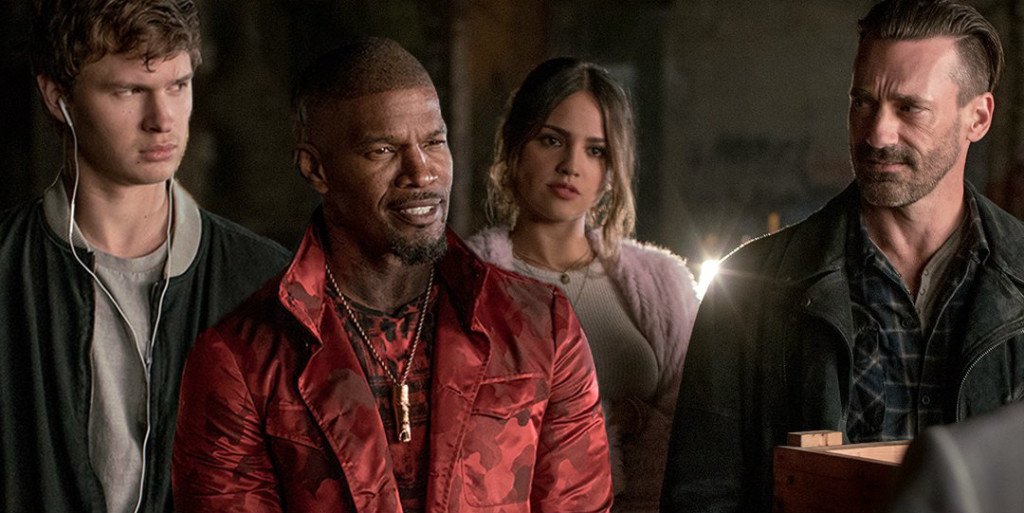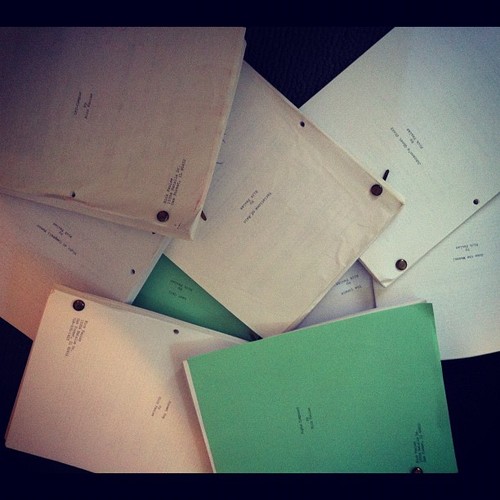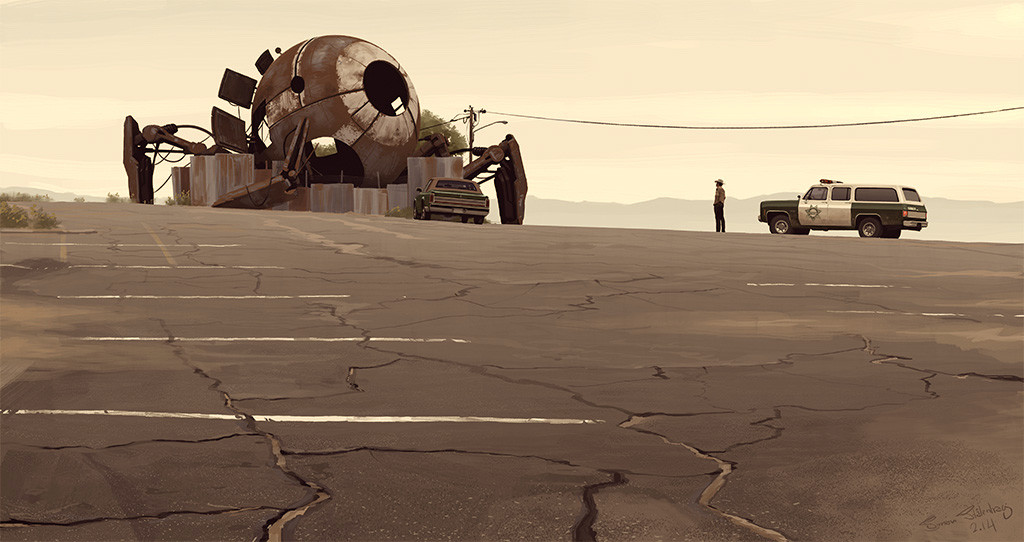It’s an early 4th of July review with a special ‘What I Learned’ section that discusses a new screenwriting term you’ll want to wrap a blanket around and take to your next sleepover. Enjoy!
Genre: Historical/True Story/Comedy
Premise: (from Black List) The truly astonishing tale of Frédéric Auguste Bartholdi – the French sculptor wholly responsible for designing, building, and delivering the Statue of Liberty across the Atlantic to where it stands today.
About: This script finished on the lower half of last year’s Black List. It’s written by Jayson Rothwell, who penned 2012’s remake of “Silent Night.” Rothwell’s script must’ve caught France’s attention, as he is now adapting a script for French Based Studiocanal, Ken Follet’s “Code to Zero.”
Writer: Jayson Rothwell
Details: 110 pages
It’s funny.
I tell writers on this site all the time that if you want to break in these days, write a true story. And yet, true stories are the scripts I’m the least excited to read. I only give that advice because that’s what’s selling. And I want you guys to sell!
What’s ironic is that I’ll ultimately have to bare the brunt of this advice when I review the scripts I begrudgingly implored writers to write, lessening the chance that I’ll get a slick new sci-fi spec like “Ex Machina” or an out-of-the-box horror thriller like, “Get Out.” Unfortunately, horror and sci-fi spec sales are harder to find these days than creative freedom on a Star Wars set.
But Liberty has me more curious than most. I’m not going to go all nationalist ‘Merica on you. The only flag waving I do is when I’m flagging down a cab to take me to In and Out. But I’ve always seen the Statue of Liberty as a curious oddity. Why is the thing most associated with our country not even created by our country? Isn’t that weird?
What’s awesome is that Jayson Rothwell feels the same way, and has taken what would’ve been an otherwise stodgy factually-based snore-fest and turned it into a really funny take on the fake news version of Lady Liberty.
Frédéric Auguste Bartholdi, an artist in the year 1871, isn’t the brightest LED fidget spinner on amazon.com. But the man’s got moxie. When Germany attacks the village Frederic is living in, he puts together a small army to fight back. An army of one. Himself.
He charges towards the heavily armored German battalion and is immediately killed via canon fire. Yet somehow, miraculously, Frederic gets back up and keeps charging. This moment is a precursor to a common thread with Frederic, which is that every time you count him out, he gets back up and keeps going.
Now only if he could do it more gracefully. Frederic is a putz. He drinks, he chases women, he bums a couch off his much more successful brother. The only thing Frederic has going for him is his slightly better-than-average artistic skills. The man can build you a hell of a somewhat interesting statue.
But Frederic is tired of building likenesses of local government figures. He’s thinking bigger. So when the opportunity arises for local artists to submit a present to the Americans they hope will solidify relations with their country, Frederic comes up with the most daring idea of all – a giant female statue that represents hope. We’re talking 30 feet tall!
Everyone thinks this is a dumb idea, but Frederic doesn’t care, and begins soliciting every rich Frenchman and American he can find. JP Morgan, Victor Hugo, William Astor. If you had cash, Frederic was at your door. Now America being the destination, the feedback was always the same. “What if we made it… bigger?”
Somehow Frederic scrapes together enough money to start production, and manages to actually build the thing. But now begins the impossible task of getting the statue to America, a feat far from guaranteed. And even if he manages to pull that off, Frederic will face his biggest obstacle yet – a country unprepared to receive the statue since they never believed he would pull it off in the first place.
I was so relieved when I opened up Liberty and read the Narrator’s first passage: “The year is 1870. Here we are in the sleepy French border village of Colmar, famous for absolutely nothing. Not even a cheese. France has declared War on Germany over some bullshit or other. Nobody really remembers.”
I was like, “YESSSSSS!!!!” Finally, someone who doesn’t take history so seriously, who wants to have fun with an idea instead of show us how good their Wikipedia reading skills are.
And I loved the opening scene, with Frederic charging towards the German army all by himself. Getting killed. Flashing back to his past, the goofball narrator making fun of him along the way, then coming back to the future to find out Frederic is still alive. And then the only reason the Germans don’t kill him is because he offers them his mother’s irresistible madelines.
But this is where the script gets itself in trouble. It sets up the expectation of a goofy take on history, yet it struggles to meet that expectation, vacillating between goofball humor (mooning the irritable Victor Hugo when he wouldn’t donate a dime) and an emotional narrative, with Frederic pushing through ten years of adversity to achieve his dream. In fact, by the end of the script, it wasn’t really a comedy at all.
I’ve seen this before. When you come into these scripts guns blazing, you have to have the conviction to follow through. If you move back towards that safe middle, you’ll never achieve that killer crazy script you set out to write. I may not have liked Baby Driver. But that’s an example of a writer who stayed true to his convictions.
Now does that mean Liberty was bad? No. It’s actually quite good. You quickly fall in love with Frederic, who’s the perfect mascot for artists everywhere. I loved this theme that all artists are idiot dreamers until they aren’t – until they achieve that one success.
And that, most of the time, what separates the great artists from the failures is simply the fact that they hang in there. Despite all the ridicule. Despite the family disappointment. Despite living hand to mouth. If you stick in there long enough so that your knowledge catches up to your talent? Success is waiting. How could you not cheer for a character like that? And isn’t that the secret ingredient to any good screenplay? Make us love your protagonist and we’ll forgive your warts.
With that said, I would’ve loved more variety to the plot. Liberty gets stuck on this raising money thing and it milks it for every franc it’s worth. It feels like 50-60 pages of this script are dedicated to raising money. Raising money in France. Raising money in America. Go back to raise money in France. Raise some more money in America. Frederic is always trying to get more money to fund the latest phase of his statue.
Now, on the surface, this meets good plotting criteria. If your hero is always pursuing money, he’s always pursuing a goal, which means he’s active, which means the story is moving forward. That’s exactly what I tell you guys to do. But, you see, you have to add variety to your plotting or the reader gets bored, regardless of whether you have a solid goal in place.
For example, maybe the statue can only be made with a certain kind of copper. So Frederic has to go off and find that copper. That’s not the best idea, but you get what I’m saying. At least you’re MIXING IT UP. If you’re hitting up character number 30 for money, you might be exploiting that plot point a little too hard.
Despite its tonal imbalance and lack of variety, I was so thankful that a script like this wasn’t afraid to subvert expectations. I’m soooooo sick of these true stories that people are only writing cause they’re selling. And while I’d still recommend you do this if you want to sell a script, I’ll also say that readers LOVE when you surprise them, when you do something unexpected. And that’s exactly what Liberty did.
[ ] What the hell did I just read?
[ ] wasn’t for me
[x] worth the read
[ ] impressive
[ ] genius
What I learned: Mini-subplots! Mini-subplots are just like they sound. They’re not full on subplots that take up 12-20 pages of a screenplay (trying to find money for a mortgage payment, for example). They’re cute mini versions of subplots that take up 2-5 pages tops. An example of a mini-subplot is Frederic’s pursuit to get a donation out of Victor Hugo (writer of The Hunchback of Notre Dame). Every 15 pages or so, Victor will tell Frederic to stop bothering him, or Frederic will attempt to change Victor’s mind, or Victor and his assistant will moon Hugo from their apartment across the street. In the end, when the statue is temporarily erected on the Seine River, Victor admits to Frederic that it is a thing of beauty, and has finally reminded him of what happiness feels like. All these little Victor snippets last a quarter of a page, a page at most, adding up to a total of 4 or 5 pages. These mini-subplots don’t define your story, but they add texture to it, and sometimes, as was the case here, lead to some of the script’s most memorable moments.
Unpopular Opinion Alert: The following opinion does not match up with the masses. For that reason, it will likely make you upset. Continue reading at your own risk.
Genre: Dramatic Thriller
Premise: A young getaway driver with a unique condition tries to balance the unraveling of his traumatic past with the increasing pressures of his getaway job.
About: When Edgar Wright was famously fired from Ant-Man after developing the film for 10 years, he wanted to leave the U.S. forever. Media Rights Capital called him right away, however, and said, “Wait a minute. We’ll make any movie you want to make.” And Edgar Wright said, “Baby Driver.” Wright is popular in cinephilactic circles for directing such films as Shaun of the Dead, Hot Fuzz, and Scott Pilgrim vs. the World. Baby Driver comes out tomorrow.
Writer: Edgar Wright
Details: 121 pages
While watching the marketing for the the new film, Baby Driver, a project nerds have been following closely since the infamous Ant-Man debacle, a couple of phrases kept dancing through my head. “Over-directed.” “Wants really bad to be the next cool thing.”
I’ve always been a believer that you make the best movie you can and let the chips fall where they may. When you try to become the hot cool thing before you’re the hot cool thing, you risk coming off as try-hard. That’s what Baby Driver looked like to me. The embodiment of try-hard.
With that said, Edgar Wright’s at least trying something different. And since there aren’t many directors who get that chance these days, it’s nice when one’s given the opportunity. This ensures that not everything is The Mummy’s Transformer Pirate Number 9.
And this one’s got a unique hook. The entire movie is constructed to its soundtrack, in rhythm. It’s for that reason why I wanted to read the script so badly. These music-centric movies struggle to come alive on the page. So, I thought, if Wright could somehow pull off a musical movie in screenplay form, he really would be a genius. That was the hope I had going into Baby Driver.
Baby is a getaway driver. That’s right. The main character’s name is Baby. We’ll get back to that. As for right now, we discover that Baby got into a bad car accident when he was seven. He’s since had to deal with a terrible ringing in his ear. The only thing to keep that ringing at bay is music. Which is why Baby goes through his entire day, including his getaway drives, listening to music.
Baby’s crew includes Doc, his boss, Buddy, a 40 year old who parties too hard, Bats, a crazy motherfucker who loves raising hell, and Darling, a former stripper whose biggest talent is making out with Buddy. Nobody understands why Baby is such a weirdo. But he’s such a great getaway driver, they don’t care.
After a few successful robberies, Bats goes batty and guns down a couple of thugs during a high-stakes deal. This forces Baby and the crew to escape a much nastier type of threat. They succeed, but Baby is rattled for the first time in his life, and his emotions are pulled even further out of whack when he meets a beautiful waitress at the diner his mom used to work at, Deborah.
Baby’s carefully controlled symphony is falling apart. And as we learn more about his volatile childhood, we realize Baby is still stuck in that 7 year old kid’s mind. He will need to get out of it if he ever plans to truly grow up. But should that happen, he will have to leave behind the only thing he’s ever been good at. Can Baby finally stop pressing play?
Hmmm… I know Edgar is loved by many.
But man does this feel try-hard. This is the most manufactured backstory in order to create a specific condition that I’ve ever read. This violates one of my primary rules of great writing. It reads like it was written. You can feel every word being typed as you read the script.
To be fair, the more stylized stuff tends to feel more written. But Tarantino’s able to pull it off. He gets super-stylized and keeps his dialogue and choices invisible.
But it’s the little things here that bothered me. In order to be extra hip, Baby doesn’t use a current iphone for his tunes. He uses a classic ipod! Or, after a getaway sequence, the description reads: “That was something,” or “The syncopation of music and action is shocking and awesome.” So we’re now congratulating ourselves for the scenes we’ve just written?
Or, right when Baby needs to break during a car chase, the lyrics for the current song are: “I’m gonna break, I”m gonna break!” A touch on-the-nose maybe?
Then there’s that name. “Baby.” It’s just dripping with try-hard pretentiousness. Every time I see it, I cringe. You know what the driver’s name in Drive was? He didn’t have one. That’s cool. This is, “Please oh please love my offbeat ironic character name!”
Assuming you can get past that, how does Baby Driver’s plot hold up? Well, it doesn’t. And I had a feeling it wouldn’t. You suspected that Wright loved this gimmick so much, he wouldn’t feel like he needed a plot. Indeed, there’s little variation to the beats of the story. We’re either in prep meetings, driving getaways, or watching Baby Driver go through his daily OCD rituals (which amount to getting coffee). That’s the playlist. And it’s stuck on repeat.
But my biggest issue with the script was Baby himself. Besides his entire backstory feeling extremely manufactured, I found him to be a clash between annoying and obvious. In one of the early prep scenes, the leader tells everyone the detailed plan, but one guy is concerned that the driver, Baby, didn’t hear it, cause he’s listening to music. So he says, “He didn’t hear it!” And the leader says, “Baby, do you know the plan?”
What do you think happens next?
Why, of course, because it’s the most obvious choice in the world, Baby recites the leader’s plan word for word. This is supposed to be the moment where we fall in love with Baby. All I could think was, “Really? You’re going to go with the exact beat that every person in the audience was expecting?”
And it’s surprising we get predictable moments like these because it’s clear that Wright went to town on this script. Despite not liking the style or the content, I can tell every word here has been meticulously combed over. You get the feeling that Wright’s been working on this for years.
Which makes me wonder if he overwrote it. Because that’s what it feels like to me. Something that’s almost too perfect. And, as everyone knows, when something’s too perfect, that’s exactly when it starts looking off.
I see Baby Driver as the antithesis of Drive. Drive’s coolness was that it just was. It could care less if you liked it or not. Baby Driver really really really wants to be liked. And that’s its biggest fault. It’s trying to become a classic before it’s even become enjoyed.
That puts me in a tough place because it’s important that movies like Baby Driver do well. So I badly want to endorse the script. But I can’t get past how try-hard it is. What I do want to do is see it in theaters this weekend. This movie was clearly meant to be consumed as a musical piece. So maybe the music will make me forget all about Baby Driver’s backed up transmission?
Here’s to hoping.
[ ] What the hell did I just read?
[x] wasn’t for me
[ ] worth the read
[ ] impressive
[ ] genius
What I learned: I did enjoy one scene in Baby Driver. And I’ll tell you which one. The team had just gotten back from a particularly gnarly job, and they end up at the diner Deborah works at. Nobody knows at this point that Baby visits this diner or that Baby has a thing for Deborah. So they’re all weirded out when Baby demands, “No, we’re not going in there. We’re going somewhere else.” Bats senses something is up. So he says, “Oh, now we’re definitely going in there.” And they all go inside and have a meal with Deborah as their server. The scene is interesting because Deborah had no idea Baby was mixed up with people like this. Crazy Bats is trying to figure out why Baby’s being protective of this place. Darling is sniffing out a romance. It was a fun scene with a ton of subtext. And guess what? It was also the only scene in the movie that didn’t depend on the soundtrack gimmick. All it was concerned about was being good. Coincidence?
A busy day here in Scriptshadowville, a wondrous place where In and Out burgers grow on trees and fidget spinners never stop spinning. That means no time for a review. But a little time for my thoughts on the weekend.
I’ll start with Transformers, a franchise which represents everything that is wrong with Hollywood. The Transformers films cater not to the lowest common denominator, but to the decimal numbers that have been cut off from that denominator. The writing in these movies is atrocious and reeks of not a single person on the production staff caring about the final product. And the movies themselves don’t even get the main Transformers component right – the effects for the transformation themselves.
So I possess a tiny bit of joy from hearing that this is the lowest Transformers opening ever. Could it be that we’re finally done with this franchise? It’s the latest in a trend of aging franchises studios refuse to bury (Alien, Pirates, Bourne, Star Trek). The problem is, the global box office is screwing this all up. It’s giving life to these franchises which so clearly deserve to have their plug pulled.
China is the biggest issue, as they’ll see anything! All this time I thought China was putting their money into top secret military defense projects. It turns out it was all going towards developing a bar that could exist below sea level. That bar is the very reason we’re threatened with another possible Transformers movie.
I have a compromise. I actually loved Transformers growing up. So maybe there’s a way we can both be happy, since this franchise, nor my hate for it, is going away.
Here’s what I propose. Why not create an offshoot franchise for more discerning Transformers audience members? Make Transformers actually cool. Don’t stop making the main movies. But add 60-70 million dollar productions where you take more chances, like what James Mangold did with Logan. Smaller, cheaper, but more adult, the kind of thing Neil Blompkamp might have done before he started writing his own scripts. How can it hurt? It might actually infuse this bastard of a franchise with life. Cause if they keep vomiting out these dick and fart joke Transformers movies, the well we built so deep that it’s reached China is finally going to dry up.
The other thing I wanted to discuss today exists, ironically, on the other end of the screenwriting spectrum. During this weekend’s Amateur Offerings discussion an interesting question popped up about the right of the writer to defend his work. One young ambitious screenwriter had submitted a quasi-experimental screenplay and whenever anyone had an opinion about it, he would defend his choices. Is this a good thing for a writer to do? In Amateur Offerings, with friends, in production meetings, in life?
Here’s what I’ve found. The young writer stage (under 27) is the period in a writer’s life where there’s the biggest gap between what he thinks he knows and what he actually knows. It’s not the writer’s fault. Hell, one of the wonderful things about being a young screenwriter is believing that you know it all, that you’ve figured out a way to build a better wheel, and drawing upon that belief to try new exciting things.
But these choices universally come at the expense of form and structure. The writer believes that because he did that unique thing on page 30, you owe him the next 30 pages of rambling before he does that next unique thing. In short, he wants praise for being occasionally brave and interesting.
The best thing young screenwriters can do is drop the dogged belief that they know better than everyone else and LISTEN. It doesn’t mean you have to implement what you hear. But at least LISTEN. Because if you doggedly charge forth on an endless experimental march without even trying to understand why the majority of the people who read your stuff aren’t responding to it, then you’re going to double, triple, even quadruple your development time. And the next thing you know you’re 30 years old before you’ve properly learned basic screenwriting mechanics, such as the 3-Act Structure.
Save your passionate defense for later in life, when you’re in the room with some dopey producer and you know, due to your 15 years of experience, that they’re wrong. Right now, the most important thing for you to do is listen. (oh, side note: Make sure that producer isn’t Kathleen Kennedy).
We had a worthy winner last week. Let’s see if we can do it again!
Here’s how Amateur Offerings works: Read as many of this weekend’s scripts as you can and vote for your favorite in the comments section. Winner gets a review next Friday.
If you’d like to submit your own script to compete on Amateur Offerings, send a PDF of your script to carsonreeves3@gmail.com with the title, genre, logline, and why you think your script should get a shot.
WEEKEND DEAL! Also, I’ve got a sweet SCRIPT NOTES weekend deal for you. $100 off any script consultation package. Well, except for the logline consultations, which are $25. I suppose that would mean I would owe $75 to anyone who signed up. Probably not a smart business decision. Anyway, if you want to sign up for a script consultation or a logline consultation, e-mail me at Carsonreeves1@gmail.com with the subject line, “CONSULTATION!”
On to the showdown!
Title: Bleak House
Genre: Horror
Logline: A preacher is placed inside a legendary haunted house where he must kill six members of his church in order to save his daughter from a dangerous criminal bent on revenge.
Why You Should Read: (note from Carson: The below text was spread out with lots of line breaks but I combined it into one paragraph so it didn’t take up the entire post) If this looks like something for you then please give this a read. It’s an elevated genre film that tackles social issues like the recent GET OUT did. Yet, this is more irreverent in its tone/characters. It has a great core question of: “As a parent would you be able to take another life in order to save your own child?” That central emotion is what will drive every reader to question how far their love would extend to save a loved one. Well pondering that question – you will be entertained every step of the way with its quirky characters. Like our lead JONAH who is a Tony Stark/Jordan Belfort type of flawed character who may not always make the best choices yet they are relatable one’s. This story is for every human being who is angry, heartbroken, who’s been shafted, who’s lost everything, who’s been ignored, not heard, lost, who is the outcast…who want to see real CHANGE. I have heard you and your feelings are reflected within this yarn. For the easily offended – note – It IS controversial…and errrr… no …I ain’t going to apologize. The TRUTH will set you free and unfortunately, sometimes it BITES. Judge for yourself. Have an opinion. Above all else…for those who’ve been searching for a place to belong… This is YOUR home… WELCOME HOME.
Title: Miss Fury
Genre: A female-led action thriller
Logline: A highly skilled group of female vigilante assassins, known as ‘the council’, must overcome brutal odds, to take down the deadliest human trafficking organization in America.
Why You Should Read: Thanks for taking the time to read my submission guys. I’m a horror writer, usually. But, decided to have a blast at the action genre. I’ve written many drafts to get it to this point, and would love to hear what Carson, and the rest of the site thinks about it. I really appreciate it guys, thank you.
Title: Lineage
Genre: Action/Comedy
Logline: A pregnant superhero struggles to complete a final, career-defining mission while losing her powers to her developing child.
Why You Should Read: By bringing a fresh perspective on the superhero craze, this screenplay became a finalist in the Industry Insider Screenwriting Contest. With its slyly humorous take on the mid-life crisis of an aging superhero that doesn’t exactly have her act together, the script is a cross between Bridesmaids and The Avengers.
Title: Bury Your Dead
Genre: Western
Logline: A young girl joins forces with her womanizing, alcoholic father who abandoned her years before, and a group of escaped slaves to track down the confederate soldiers who murdered her family.
Why You Should Read: This western won first place in the Script Pipeline contest last year. Matt at SPL said my latest (and much improved) draft was the best western he’s read in 10 years. Then he went on to say the only thing holding it back is that it’s a western. Well, shit! The producer of Bone Tomahawk, who is also producing a new movie with Mel Gibson and Vince Vaughn, said he really enjoyed it and asked if it was still available. So I have my first meeting today (Tuesday June 6th). By the time it’s up for AOW (if I make the cut) I should have an update. So while I love the script and the characters, and while I also feel it’s strong overall, I know it’s not perfect and a work in progress. That’s where Carson and you lovely people come in… and with your help I know I can make it stronger than it is, give eyes to the weaknesses that I may have overlooked. Stuff to cut, stuff to expand, stuff to improve, etc. I also want to test the waters and see how people as a whole feel, react, and respond to the story and the characters. Hopefully this sees Saturday for voting and Friday for reviewing. I also promise to be part of the converation, which a lot of these AOW writers don’t seem to do. Thanks for reading and giving it a shot!
Title: Disbelief
Genre: Surrealism/Horror
Logline: Two friends take off on a road trip to college, several states away, and decide to take a myriad of drugs while going through the desert on the way. The morning after this binge, they find themselves stranded in the middle of the desert, their car’s gas tank empty. What follows is a horrific, confusing, and uncooperative series of events that constantly rage against our characters, as they struggle to survive in the desert.
Why You Should Read: My name is Liam McNeal, I’m a twenty year old film fanatic from Washington state. This is my third screenplay, and it’s the most experimental of all of them. It’s a little wild, and deliberately avoids expectations, so it can tend to be a little off-putting, but I have faith in it. It’s absurd and a little unbelievable at times, but, as Paul Thomas Anderson said when confronted with similar accusations on Punch-Drunk Love, “If everyone else in town starts fucking doing that, maybe we’ll have some movies to watch.” Suspension of disbelief is an important element in filmmaking, and the purpose of this screenplay (again, experimental) was to try and see the boundaries of that, without totally breaking the relationship with the viewer. It’s betrayal after betrayal. I can understand if you or anyone else doesn’t like it, but I’m sticking with it, and I’m hoping to get some constructive criticism (which I will no doubt cherry pick) out of this experience. I realize that this may be contrary to the philosophy of your site, and I respect that, but my interests do not lie in selling, they lie in the art of the project. I don’t care about making money in this project, I just want to make something that is at least somewhat good. Unlike my previous screenplay (very long) this one is very short, but contains a lot of segments without dialogue.
Genre: Sci-Fi
Premise (from writer): Fleeing a violent past, a mechanic relocates to the anarchic edge of civilization to build a new life, and a new body, for her teenage son.
Why You Should Read: I’m a longtime reader, first-time submitter to your site, currently living in Vancouver and working hard on breaking into the industry. I’ve won a few national awards for my stage plays and now I’m finally at the point where I’m feeling confident enough in my screenwriting work to start submitting to competitions.Transference is my latest feature-length screenplay, which my table-reading group said has some strong Mad-Max-meets-Westworld vibes, and I wanted to throw this into the mix with the other Amateur Offerings to see how it stacks up in comparison.
Writer: Andy Garland
Details: 91 pages
As savvy veteran screenwriters have already discussed, Transference was up against the gun from the get-go. This logline had major issues, the biggest of which is that it doesn’t state the central source of conflict in the story. A woman goes to build her son a new body. Where’s the conflict there? It sounded more like a vacation.
Conflict comes from the “but then.” A woman goes to build her son a new body… BUT THEN. But then she encounters resistance from the increasingly hostile locals. Now sometimes, writers are just bad at loglines. I get that. Loglines are weird. Despite being so small, they’re unnecessarily confusing to construct. However, in my experience, when one doesn’t know how to add conflict to a logline, they don’t know how to add conflict period, leaving their screenplay devoid of tension or struggle. Let’s hope that’s not the case with Transference.
The surface of the earth is cooking. We’re somewhere in the not-too-distant future, and as a character will later tell us, because of the last generation’s idiot mistakes, the rest of us are suffering through one continuous bout of really bad sunburn.
Due to the increased temperatures, food has become scarce, and having children is akin to murder. Who would willingly bring a child into a situation where they’ll most certainly starve to death? Or worse. This has led a lot of people transferring their children’s consciousness into robotic bodies.
That’s where our hero Hailey is at. Hailey shows up in some dying bumblefuck town, buys an old shack, and starts using scrap parts to build a body for her son, Jacob, who’s currently living inside an old smartphone.
The plan is to lay low. But law enforcement gets wind of Hailey’s arrival and wants to know what’s up. Hailey keeps them at bay with a payout, but they remain curious, especially when a mysterious new fella rolls into town – Willis. Unlike everybody else in this world, Willis looks like he just rolled off an assembly line. Maybe that’s because he did. Willis, it turns out, is a robot.
And he’s in town looking for Hailey, willing to kill anyone who gets in his way. When Hailey learns that Willis is nearby, she goes full Gepetto, speeding up the process of building her son’s body. The closer Willis gets, the more we learn about why Hailey has to transfer her son, which brings to light a horribly selfish decision she made when she was younger, a decision that would’ve kept her son human.
Hmmmmm….
When you finish a script, you place it in one of three mental categories. Yes. No. Maybe.
Transference falls into Maybe. However, I’m not sure if it’s a Maybe with potential. Or a “not bad” Maybe, the kind that fades from memory after a couple of days.
Transference in an intriguing cross between History of Violence, A.I., and Mad Max. It’s got an extensive badass mythology and some memorable characters to boot. However, it installs a plot mechanism I’ve never liked: Sitting your characters down into a single location and waiting.
Now, it’s not that this setup can’t work. If you keep the conflict coming at your characters and set up some looming danger they’ll have to deal with, you can build enough suspense and intrigue to keep us invested all the way through. The problem, unfortunately, is that because this narrative device is so static, it’s always on the verge of becoming boring, which means you have to be vigilante in constructing plot points and story threads to prevent even the slightest lull.
It’s different than something where characters are always on the move. The ever-changing environment ensures that new dangers and challenges could appear at any moment.
Some of this can be alleviated if your main character has a strong goal and remains active. Mad Max takes place in one location, but Max had a clear goal. Get himself enough fuel so he could be on his way. Transference has a goal as well – Hailey wants to rebuild her son. But there’s a slight problem with that. Her son is alive and lucid from the get-go. He just doesn’t have a body yet.
The reason this is an issue is because it isn’t clear what’s gained from Hailey completing her goal. If she isn’t able to build a full body for Jacob to inhabit, then what? She can still talk to him. He’s still “alive.” This goes back to the age-old screenwriting dilemma of stakes. What are the stakes of your character not achieving her goal? They don’t seem to be much in Transference, as far as I can tell.
With that said, I liked the mystery behind Hailey’s past. What is Hailey running from? Who’s chasing her and why? Seeing Willis come into town with Hailey in his sights infused Transference with some much-needed energy. This is the “looming” I referred to earlier. Whenever you have these stuck-in-one-place plots, “looming danger” is your greatest ally.
My other main problem with Transference is that the mythology, while cool, wasn’t as clear as it could’ve been. I wasn’t clear on why children were being turned into robots. Was having a child illegal to the point where the government would execute it? Was placing them inside a robotic body the only way to save them? Then there’s this curious rule that adults can’t transfer into robotic bodies. Only kids can. Cause their minds are still developing or something. But Willis had been transferred hadn’t he? And he was an adult. We also eventually find out that Jacob is now 20. Isn’t that an adult? So how is Hailey transferring him?
When you write a science-fiction (or fantasy) story with an elaborate mythology, the story relevant parts of that mythology must be explained clearly to the reader. Too many writers make the mistake of assuming the reader will just “get it.” But you have to remember that we haven’t spent the 50-some hours with you putting your mythology together. All we have to go on is the environment and the allusions to the rules you tell us.
The good news is that that isn’t a huge fix. It seems like Andy knows his mythology. He just hasn’t made it clear enough to us.
I’m more worried about the static location and the vague stakes. This script will live or die on the emotional impact of its mother-son relationship. To that end, we need to raise the stakes there somehow. Maybe you build something into the story where Jacob’s current hard drive is dying. Hailey needs to transfer his consciousness soon or lose him forever. That can be the last stage of the body building. And it’s a super fragile process. One mistake during the transfer and Jacob could be lost forever. This provides a ticking time bomb AND stakes.
I’d also recommend bringing Willis in a teensy bit earlier. Right now he hits us at the midpoint. I don’t think enough is going on in the first half of the script to keep us invested until that point. By introducing the looming threat of Willis earlier, we achieve more intrigue from the reader which should get us to that killer Willis bar scene (no pun intended!).
This script needs work but it’s pretty good! Definitely worthy of winning last week’s showdown.
[ ] What the hell did I just read?
[ ] wasn’t for me
[x] worth the read
[ ] impressive
[ ] genius
What I learned: Remember that time in reading is relative. It goes by slower if the reader is bored and faster if the reader is engaged. A great 130 page script will read exponentially faster than a shitty 90 page script. The good news is, you have plenty of tools at your disposal to manipulate time. One of those is a ticking time bomb. If you imply that time is running out, it creates the illusion during the read that time is moving faster. So if you have two scripts, both 100 pages, one with a ticking time bomb and one without, guess which one reads faster? If Hailey is in need of a part – the “brain” she must transfer Jacob into – and she only has a certain amount of time to find it or Jacob’s current “brain” will die out? You’re manipulating time. I’m not saying that this choice is the best for the story. Only that it and other decisions to manipulate time should be considered. If you’re not manipulating time on some level, your script is going to read like a textbook on the history of Siberia.








